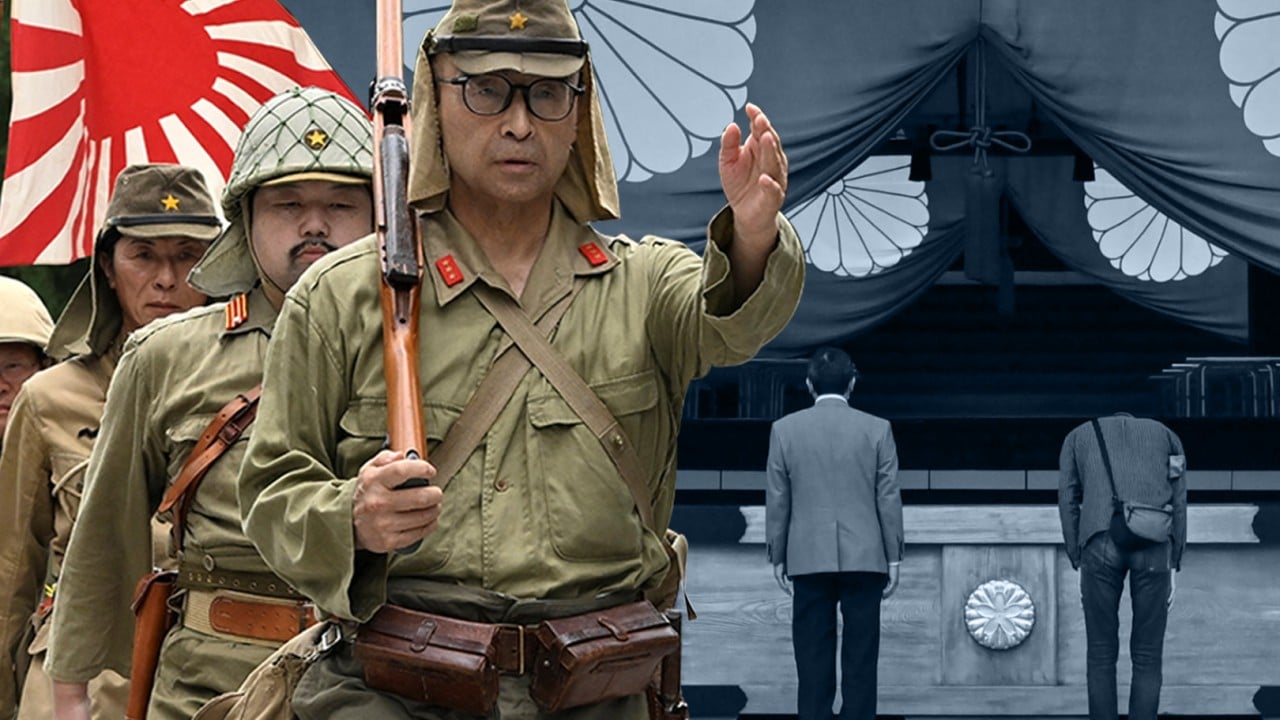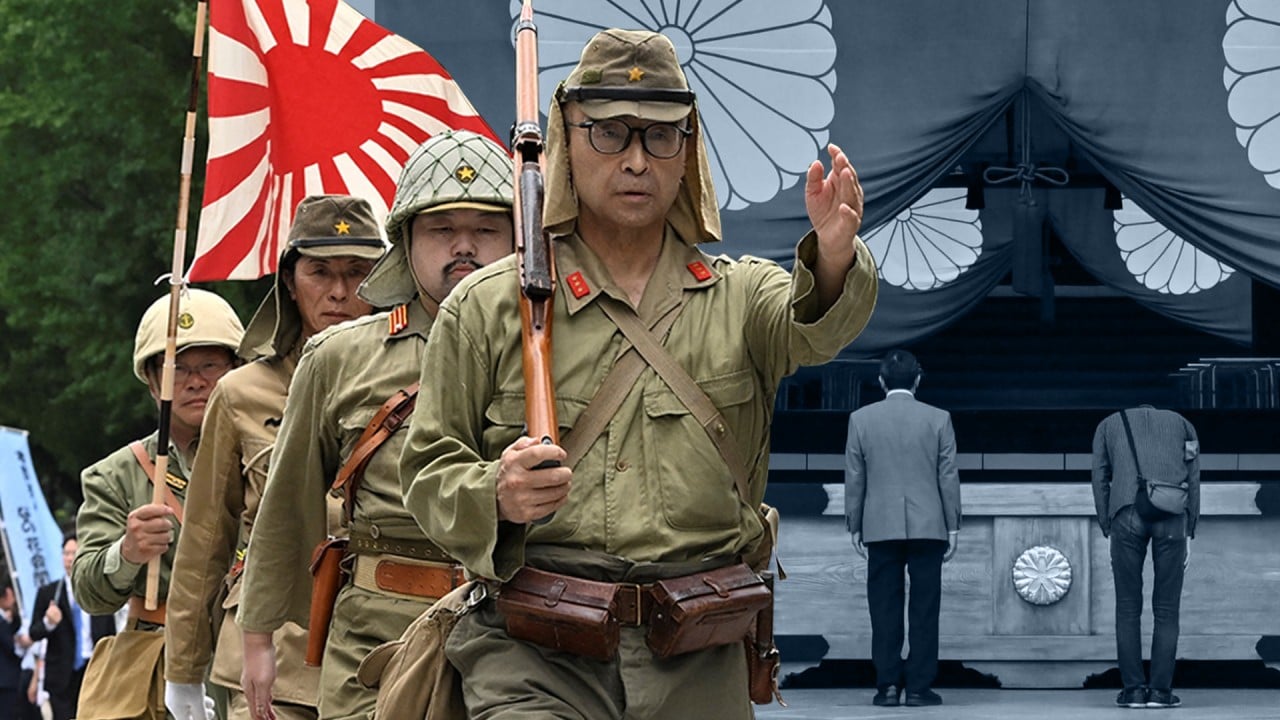Outrage has swept across Japan after footage emerged on social media appearing to show a Chinese man urinating and spray-painting the word “toilet” on a pillar at Tokyo’s controversial Yasukuni Shrine.
The incident has once again shone a spotlight on the shrine’s contentious history, highlighting its role in stoking grievances against Japan among neighbouring countries.
A Tokyo businessman was so incensed by what’s been described as the desecration of the shrine honouring the nation’s war dead that he has put up a reward of 10 million yen (US$63,960) for anyone who can help bring the suspect to justice.
In a post on social media platform X on Saturday, cosmetic surgeon Dr Katsuya Takasu, the founder of Takasu Clinic, offered a reward of 5 million yen – but doubled that figure the following day and said he would be happy to send the money abroad if the suspect is detained in another country.
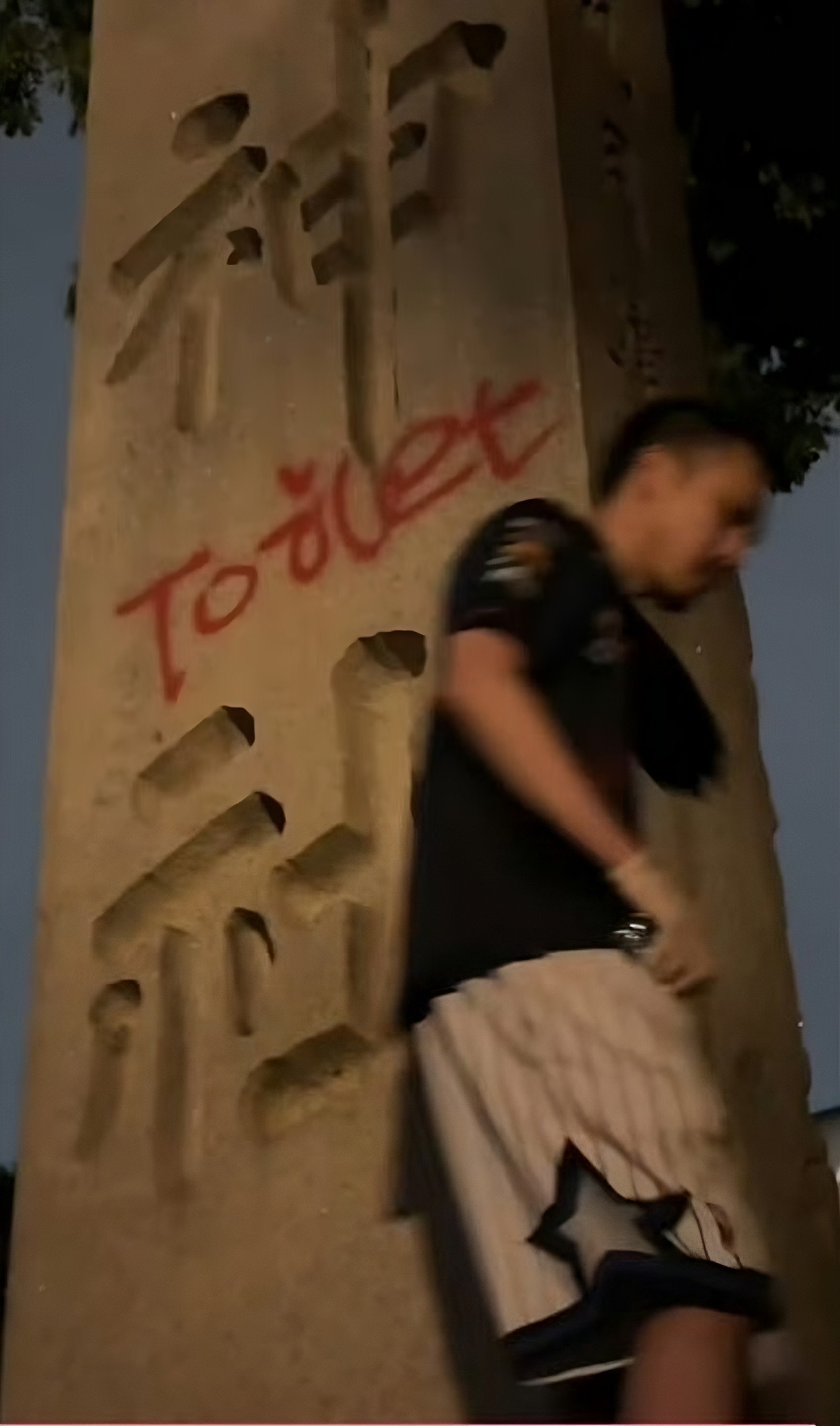
Takasu’s posts on X have attracted more than 14 million views, the vast majority supporting his campaign to locate and detain the suspect, whose name and personal details have been published in online forums.
In the video, which was first posted on Chinese video sharing app Xiaohongshu on Saturday, the suspect identifies himself as “Iron Head” and says in English, “Is there nothing we can do about the Japanese government’s ocean release of contaminated water?”
The comment is assumed to be a reference to the discharge of treated water from the Fukushima Dai-ichi nuclear power plant, where three reactors suffered meltdowns in the aftermath of the March 2011 earthquake and tsunami disaster. The Japanese government treated the water, lowering the number of radioactive particle to within legal limits, before starting to release it into the ocean last August.
While the Fukushima water release has been a recent topic of controversy, with Russia and China banning Japanese seafood products over claims of potential contamination, the Yasukuni Shrine has primarily been a target of international criticism due to its links to Japan’s imperial history.
Founded in 1869, the infamous shrine is dedicated to more than 2.46 million men, women and children who died in war. It is seen by Beijing and Seoul as a symbol of Japan’s past military aggression, and honours convicted war criminals among the war dead.
These includes 14 men who were tried and convicted of Class A war crimes during World War II, including General Hideki Tojo, who commanded the Kwantung Army in China and later served as prime minister, and Kenji Doihara, who headed the intelligence services in Tokyo’s puppet state of Manchukuo in northeast China in the 1930s and early 1940s.
“[China’s] Communist Party has, for decades, made a point of focusing attention on the shrine and making sure that it features prominently not only in education but also as a staple in war films and television dramas,” said James Brown, a professor of international relations specialising in Russian affairs at the Tokyo campus of Temple University. “So if you are a young person growing up in China, Yasukuni is not an issue of the dim and distant past, it’s very much part of the here and now.”
Japan is has also stood firm on the matter, he said.
“There is the argument that if the nation’s leaders wanted to show their respect to the nation’s war dead, which most would agree is fine, then they could very easily go to the nearby Chidorigafuchi National Cemetery, which is the memorial to the victims of the war and would be completely non-controversial,” Brown said.
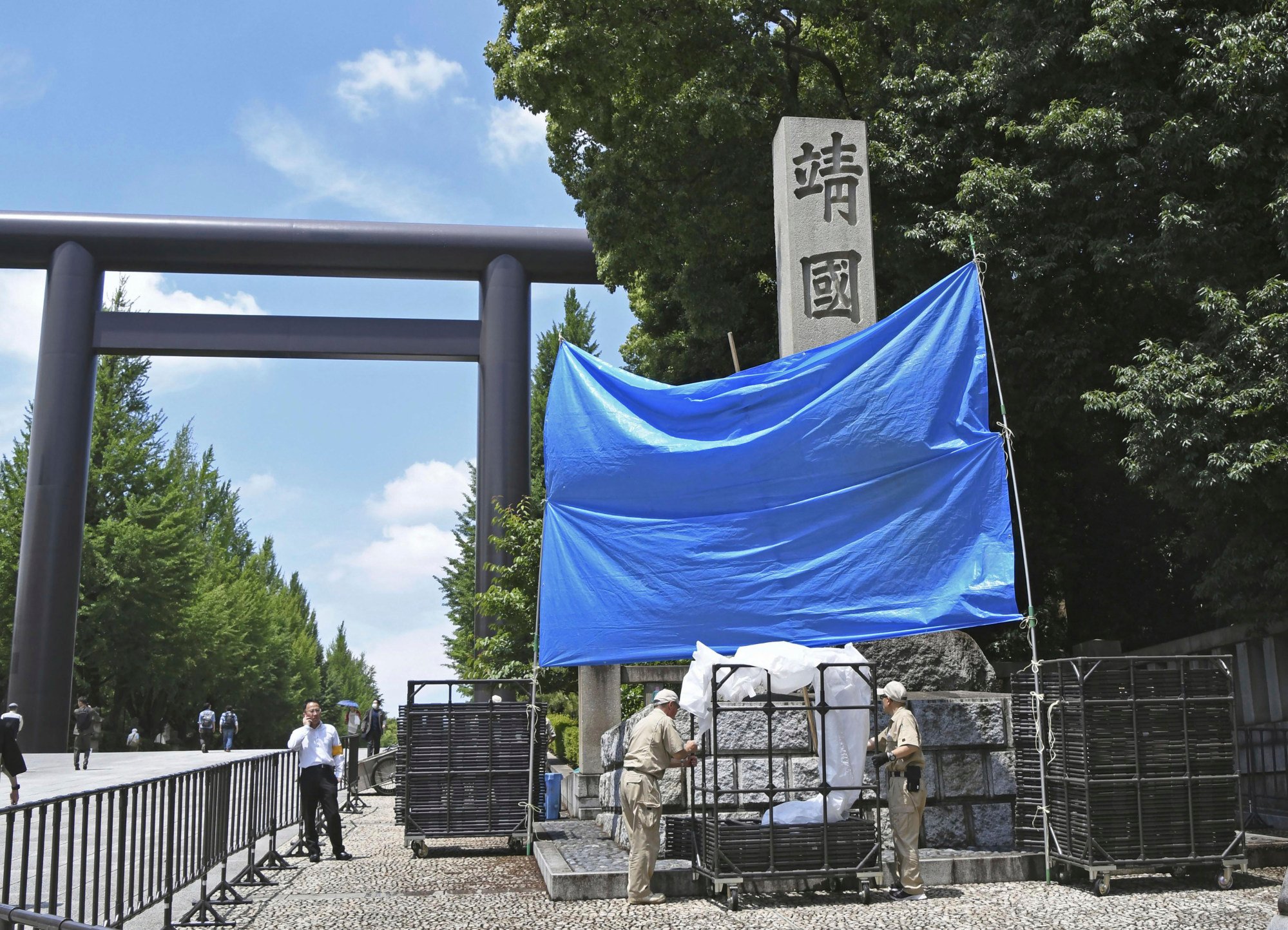
And although Japan’s old foes insist they merely want the Class A war criminals to no longer be honoured at Yasukuni and for no politicians to make pilgrimages there, Brown says that no Japanese government could ever commit to that, given the potential domestic political fallout.
Even if Tokyo were to enact that change, Brown reckons it’s unlikely that the country’s most vociferous critics – China and both North and South Korea – would halt all references to the years that Japan waged war on their soil.
Ken Kato, a Tokyo businessman whose grandfather died in combat in the Philippines in World War II and is remembered at the shrine by the Kato family on the anniversary of Japan’s surrender in 1945, said the Chinese government should be petitioned to hand the graffiti suspect over for trial.
“This is an insult, and it makes me very angry,” Kato told This Week in Asia. “China should send him back because this was clearly prepared in advance, and the person who filmed his vandalism should be identified and charged.
“But it’s remarkably stupid,” he added. “Do they not realise that by urinating on a Japanese shrine and then writing graffiti on a pillar, Japanese people will reach obvious conclusions about Chinese people? Is that what Chinese people want us to think of them?”
Kato said he wasn’t optimistic that the suspect would be returned to Japan for investigation.
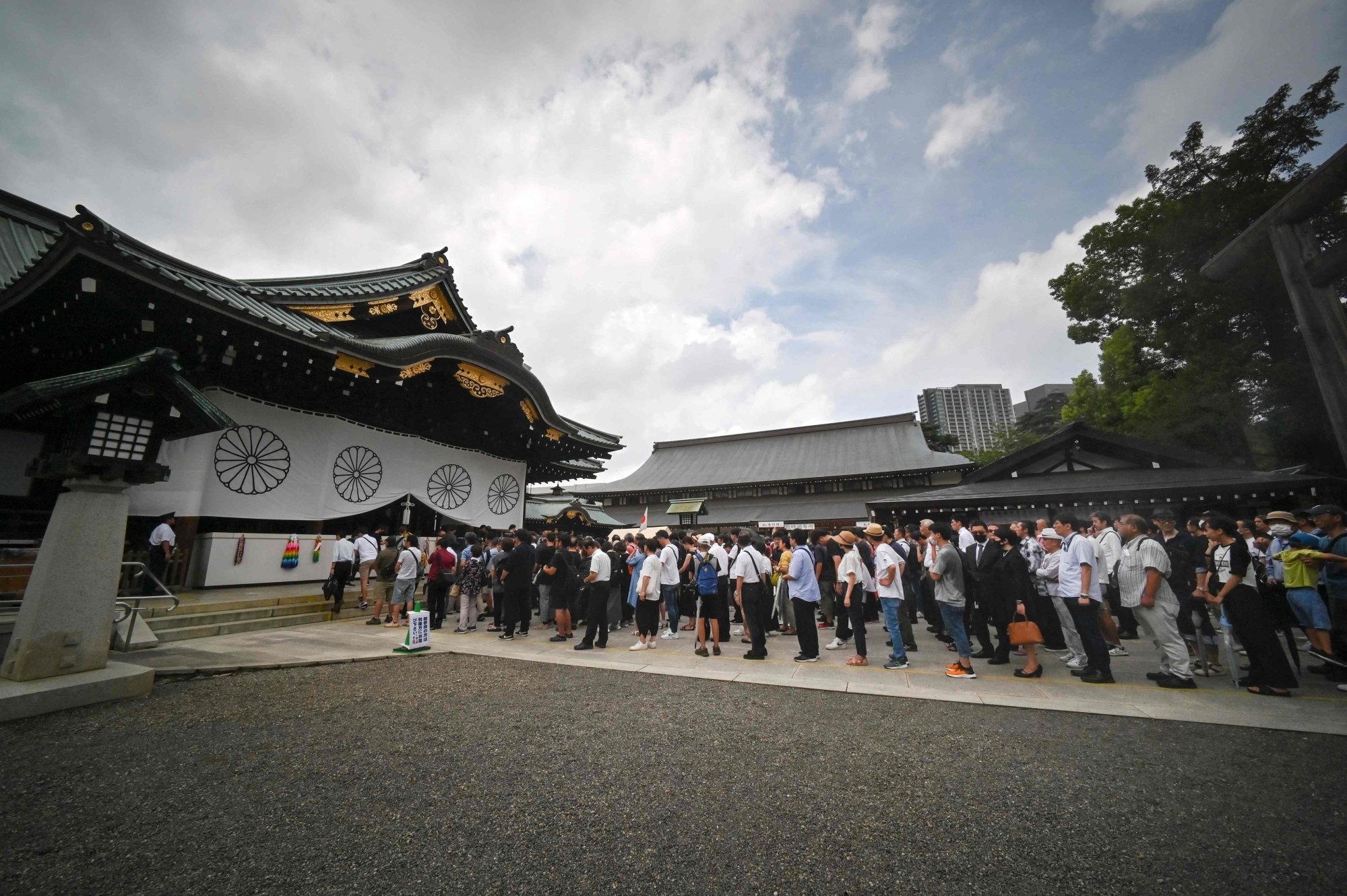
The incident has similarly stirred online anger, with some suggesting that Japan should close its borders to Chinese citizens.
“A decent, developed country would criticise actions like this by one of their citizens as a national disgrace and the ambassador would apologise, but this is China, so I’m sure he will be celebrated as a hero instead,” said one message on the website of online television network Abema Times.
This is not the first time that the shrine has been damaged by foreign nationals.
In December 2015, a South Korean man was arrested after placing a home-made bomb in a toilet at the shrine during a festival. There were no injuries. In 2013, another South Korean man attempted to break into the shrine. He threw a bottle of paint thinner in the main hall before he was caught.
In 2011, a Chinese man was suspected of setting fire to one of the shrine’s gates but managed to evade arrest and returned to China. The following year, he was arrested in South Korea for an attack on the Japanese embassy in Seoul. He was sentenced to a prison term, but South Korean courts refused to extradite him to Tokyo over the earlier attack on Yasukuni Shrine.
Japanese police say they are treating the latest incident as an act of vandalism, although the perpetrator has reportedly already left Japan. The graffiti was removed by Monday morning.


